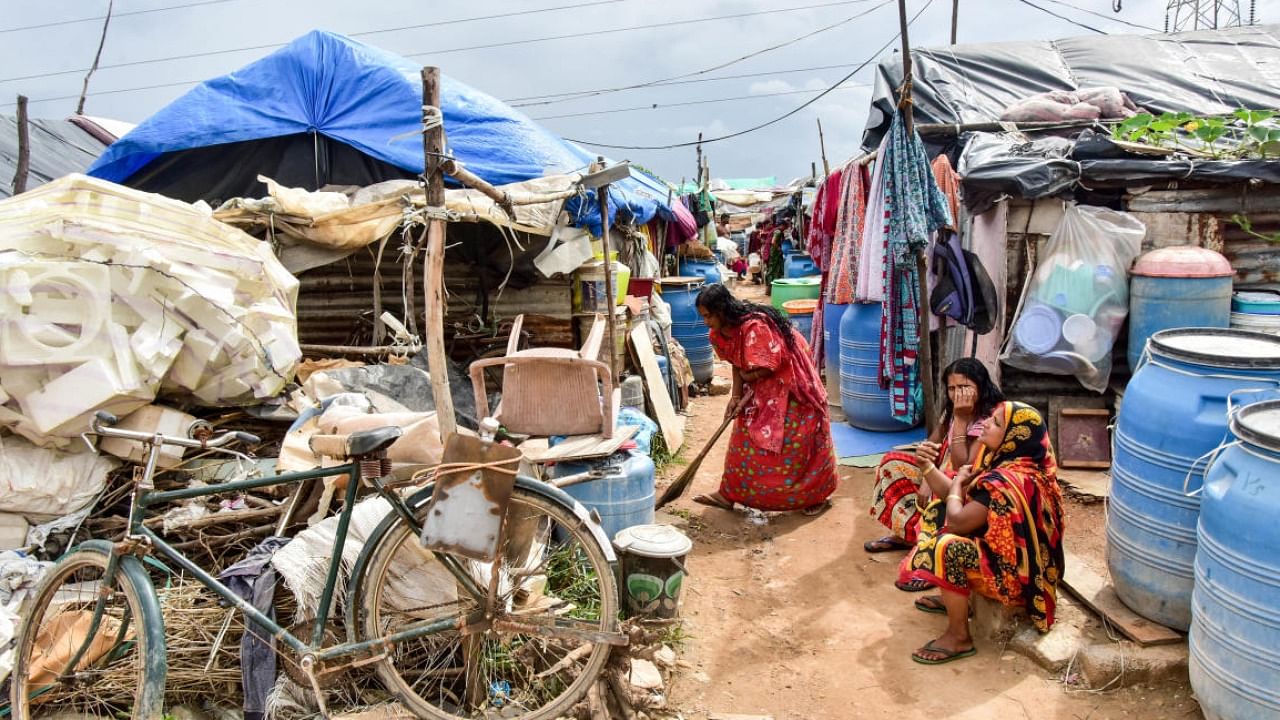
Pre-monsoon showers disrupted life in the city as several parts were inundated due to heavy rains. While most people battled flooded roads and basements, slum dwellers in the city were forced to rely on makeshift measures that offered minimal protection from the rain.
A senior BBMP official noted that officials visited these slum settlements every year before monsoons to ask the residents to relocate themselves, warning them that they wouldn't be paid any compensation otherwise.
However, relocating people remains a challenge due to the involvement of private entities. "Private parties build an establishment for a large number of people coming from other states or other districts in the state and take money to establish them on private land. Those are not supposed to be there because if there is proper land alienation then the authorities will look into a number of factors because revenue land that is converted into residential land has some safeguards. But in this case, they (private parties) are just constructing sheds on revenue land, which is a challenge," the official told DH.
As this was a humanitarian issue, it was tricky to hold people accountable for building settlements on private land, said the official. "As per the law, we had a provision to allow us to question the landowner about why they allowed people to settle on revenue land. That was the first responsibility of the revenue department," he said.
There were an estimated 80 to 100 undeclared slums in the city.
"Declared slums were in core areas and did not face many issues during monsoons as the BBMP had built kaluves to allow water to rush out quickly and prevent waterlogging during monsoons. But the BBMP's major concerns were about the unauthorised slums that cropped up in low-lying areas prone to flooding," said the BBMP official.
The Karnataka Slum Development Board (KSDB) took steps to rehabilitate slum dwellers living near rajakaluves and areas prone to flooding but only among the 410 declared slums in the city. The ones in Kaggadasapura and Benniganahalli were undeclared and hence not within their jurisdiction, officials noted.
"Although we received no reports of flooding from declared slums in the city, we already surveyed the areas where flooding might occur and shifted people out of those areas," said KSDB Commissioner B Venkatesh. Residents from 10 to 15 declared slums were shifted to Laggere and Tavarekere, he added.
'We live in poor conditions'
When DH visited the slums of Kaggadasapura, the residents explained how they were unable to sleep at night due to rainwater flooding their tents. When the roofs started to leak, they were forced to use boxes to plug the leaks. Approximately 70 to 80 people lived together in one of the slums, 20 of whom were children. The cramped quarters made them susceptible to common monsoon illnesses. Stagnant water also raised the risk of mosquito infestation, besides the lack of sanitation facilities that already posed serious health concerns. "There are no toilets here, so we go to the nearby ground," said a resident. A similar situation persisted in the slums of Benniganahalli. Most of the slum residents worked as labourers in construction sites and government schools and also worked for the BBMP. They spent a significant portion of their wages to pay rent to the landlords. However, they alleged that no officials had visited them nor acknowledged their issues.